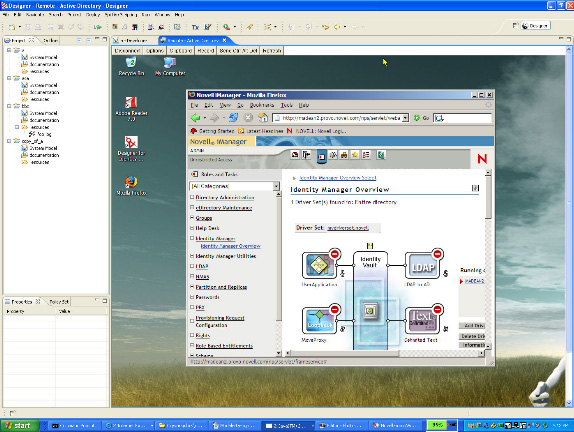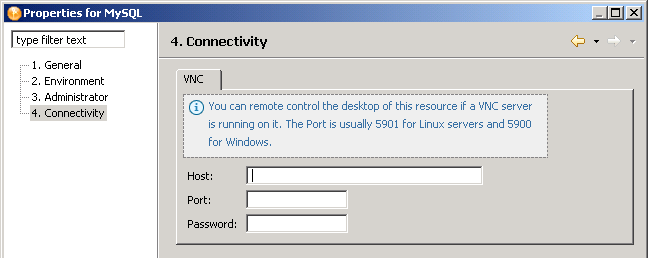10.6 Configuring Application Properties
In the Modeler, double-click an application icon. Designer displays the application’s properties.
10.6.1 General
Changing the Type of Application
You can change the type of application your driver connects to. For example, if you configure a JDBC driver to connect to a MySQL database, but then need to change to an Oracle database, you can make that change here.
-
From the list in the pane, select the driver that you need.
-
Click .
Editing or Creating a Driver’s Icon
You can edit a driver’s icon so that you can view the iManager icon to be used in Designer. See Section 10.5.7, Editing or Creating a Driver iManager Icon.
10.6.2 Environment
You can enter notes about the application’s environment.
10.6.3 Administrator
The option is divided into three sections. Entering information in these sections is optional.
-
Personal Information: Lets you enter information specific to the Identity Vault, such as Name, Title, Department, and Location,
-
Contact Information: Lets you enter information such as Email, Phone, Cell Phone, Pager, and Fax.
-
Notes: Allows you to type any reminders you might need for future reference.
10.6.4 Connectivity
LDAP
You can configure some applications (for example, Active Directory, eDirectory, and LDAP) for an LDAP connection. If the application doesn’t support an LDAP connection, the LDAP tab doesn’t display.
Host: The server’s IP address or DN (in LDAP format).
User: The user’s name.
Password: The user’s password.
VNC
From within Designer, you can view the desktop of the machine that is running your applications, and remotely control that desktop by interacting with it. This feature enables you to administer users or your applications with the native tools of that system, from one location.
This functionality is hosted in an embedded editor inside Designer. You can have multiple remote control sessions with different systems, all open at the same time.
Figure 10-11 A Remote Desktop

Configuring a Remote Connection
To remotely control a desktop, the machine that is running your application needs to have a VNC (virtual network computing) server installed and running. You can usually download a VNC server for free from the Internet.
You can easily configure any system or design element in Designer for this feature by editing any application or design element:
-
Right-click an application or design element.
-
Select > .

-
On the VNC tab, type the authentication information.
Host: The DN (for example, server33.houston.company.com) of the server where the VNC is running.
Port: Typically 5901 for Linux servers or 5900 for Windows.
Password: The password to the VNC server.
-
Click .
Customizing the Viewer
A toolbar at the top of the desktop viewer enables you configure the following:
-
Encoding type (RAW, RRE, CoRRE, Hextile, Zlib, Tight).
The default is Tight.
-
Compression level.
-
JPEG Image Quality (0 - 9).
The default is 6.
-
Cursor shape updates.
The default is Enable.
-
Use CopyRect.
The fault is Yes.
-
Mouse buttons 2 and 3.
The default is Normal.
-
View only.
The default is No, so that you can interact with the desktop.
-
Clipboard.
-
Record session and save to file.
-
Send Ctrl+Alt+Delete.
-
Refresh.
For more information, see TightVNC documentation.
10.6.5 AD Domain
You can capture information about an Active Directory application. This information is useful if you want Document Generator to include this information when you document the project.
If you provided information in the LDAP settings, Designer populates the AD Domain fields.